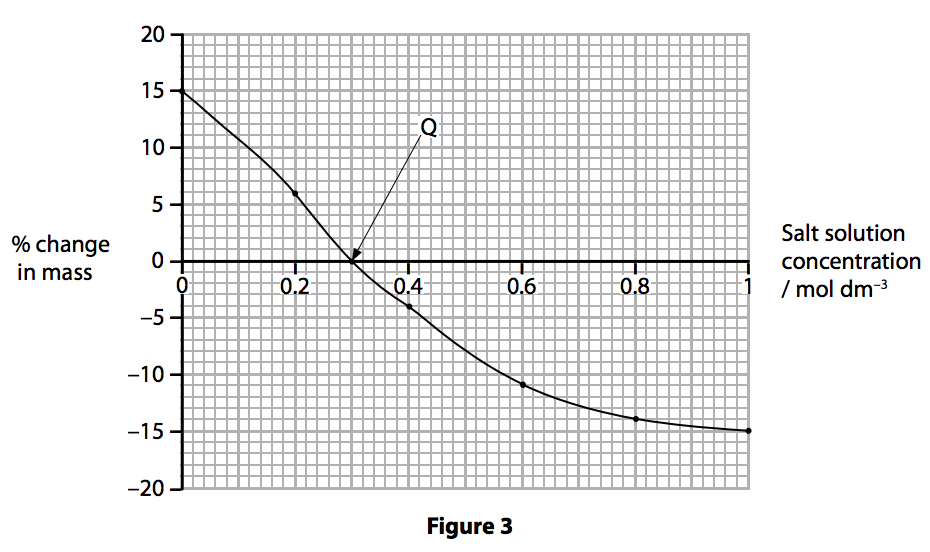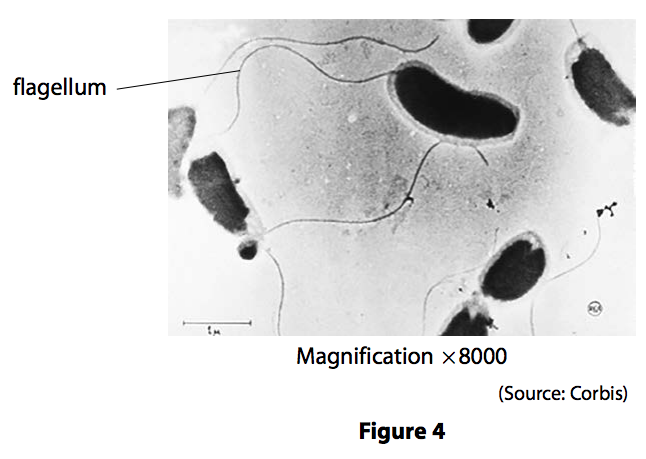B1 Specimen (set 1) - Q3
3) Diffusion, active transport and osmosis can be used to move substances into and out of cells.
(a) A student was investigating osmosis in potato cubes.
He used the following method:
● cut a potato into equal-sized cubes
● recorded the mass of each potato cube
● placed each potato cube into different concentrations of salt solution
● removed the potato cubes after 30 minutes
● dried the potato cubes and recorded the final mass of each cube.
He plots his results on a graph shown in Figure 3
(a) A student was investigating osmosis in potato cubes.
He used the following method:
● cut a potato into equal-sized cubes
● recorded the mass of each potato cube
● placed each potato cube into different concentrations of salt solution
● removed the potato cubes after 30 minutes
● dried the potato cubes and recorded the final mass of each cube.
He plots his results on a graph shown in Figure 3
The method controls a number of variables.
(i) Name one other variable that needs to be controlled during the student’s investigation. [1 mark]
(ii) Give a reason why the potato cube must be dried. [1 mark]
(iii) Explain the conclusion that can be made about point Q on Figure 3. [2 marks]
(iv) Give one way that the student could obtain more data to increase the accuracy of point Q. [1 mark]
(b) Osmosis is one method that single-celled organisms, such as bacteria, use to obtain molecules from their environment.
Which of the following is a correct description of a process involving the transport of molecules? [1 mark]
(i) Name one other variable that needs to be controlled during the student’s investigation. [1 mark]
(ii) Give a reason why the potato cube must be dried. [1 mark]
(iii) Explain the conclusion that can be made about point Q on Figure 3. [2 marks]
(iv) Give one way that the student could obtain more data to increase the accuracy of point Q. [1 mark]
(b) Osmosis is one method that single-celled organisms, such as bacteria, use to obtain molecules from their environment.
Which of the following is a correct description of a process involving the transport of molecules? [1 mark]
(c) Figure 4 shows some Vibrio cholerae, the bacteria that cause cholera.
The length of one flagellum on Figure 4 is 68mm. Calculate the length of the flagellum in µm. [3 marks]
(Total for Question 3 = 9 marks)
(Total for Question 3 = 9 marks)



